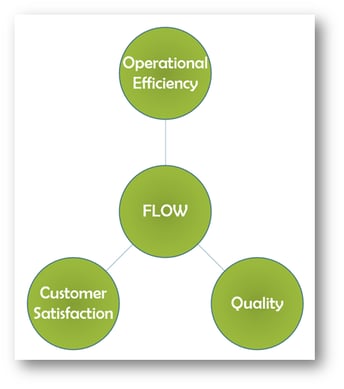 Recently I read an article published by a smart guy. I know he must be because he holds a Master of Science and a Bachelor of Arts degree. He is also an "international master trainer and award-winning author" writing on supply chain and other management topics. [He shall go unnamed in this article, however, for reasons that may become apparent below.]
Recently I read an article published by a smart guy. I know he must be because he holds a Master of Science and a Bachelor of Arts degree. He is also an "international master trainer and award-winning author" writing on supply chain and other management topics. [He shall go unnamed in this article, however, for reasons that may become apparent below.]
Therefore, you can imagine my shock when I read that, in his opinion, what it takes to optimize inventory, at a minimum, are: "fixed, known, certain, [and] reliable lead times; and accurate demand forecasting."
This, I believe, will mean that a very small number of businesses will ever optimize their inventories.
While there are a few industries and locales that might fit the bill for the creation of "fixed, known, certain [and] reliable supply lead times," there are very, very few that can lay claim to "accurate demand forecasting."
If there is one thing that supply chain executives and managers can agree upon, it is the fact that forecasts are always wrong. The only variables are by how much they are wrong and in which direction.
Do Not Wait
If you are waiting for the next round of new and improved demand forecasting solutions to bring you what you need to finally "optimize your inventory," you are going to be sadly disappointed.
Brand and product proliferation, new ways of marketing and shipping to the customer both near and far, ever-growing international competition, and the Internet-empowered consumer are changes that are increasing market volatility and unpredictability faster than new forecasting algorithms can bring improvement. There is no way to catch up.
Don't Be One of Those
If your approach to supply chain and inventory management is not dynamic, I will guaranty you that your inventory is not optimized.
If you are like many of our clients when we first engage with them and your lead-times, safety stock, minimums, maximums and ROPs (reorder points) were set six years ago by some guy who "doesn't work here anymore;" or even if they were set three months ago, or last month, or last week; I will still guaranty that your inventory is not optimized.
In most businesses today, if your system is not daily recalculating values that directly drive the inventory you have on-hand and in your supply chain, it is virtually impossible for your inventory to be optimized.
Subtle changes in the market, as measured by small shifts in ADU (average daily usage), should drive dynamic and incremental shifts in reorder points, min and max stock levels, replenishment cycles and more. And, if you manage more than about 500 SKU-locations, you simply will not be able to do this effectively in Excel workbooks—no matter how sophisticated your macros are.
We help our clients find, select, plan and implement supply chain management tools that provide full-time dynamic management of your inventory and supply chain flows.
Have Questions or Need Help?
 Click below to get in touch with us here at RKL eSolutions if you have questions about new features or need help with optimizing your inventory and suplly chain.
Click below to get in touch with us here at RKL eSolutions if you have questions about new features or need help with optimizing your inventory and suplly chain.
Ask a Question


